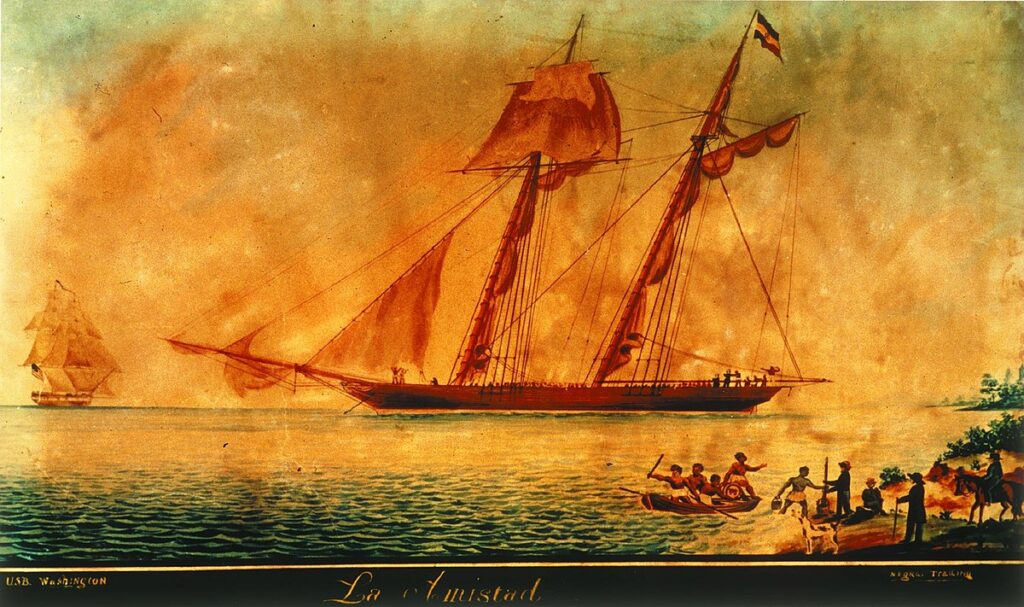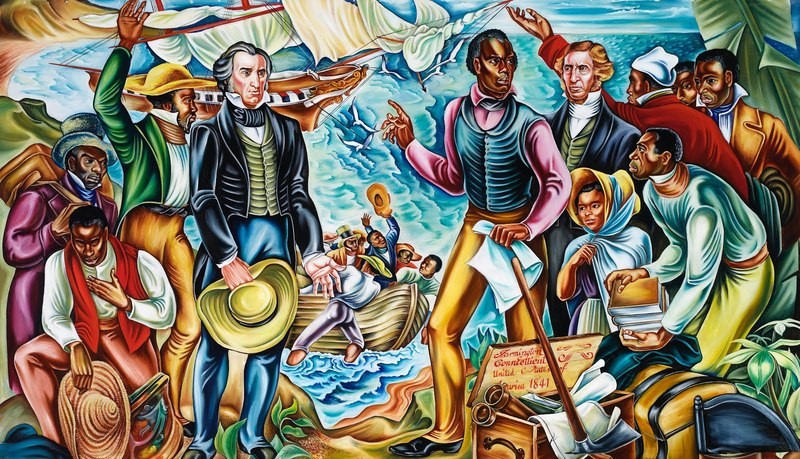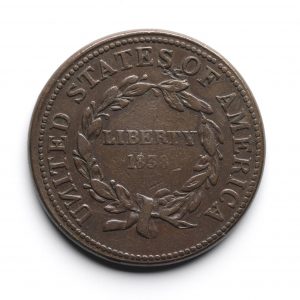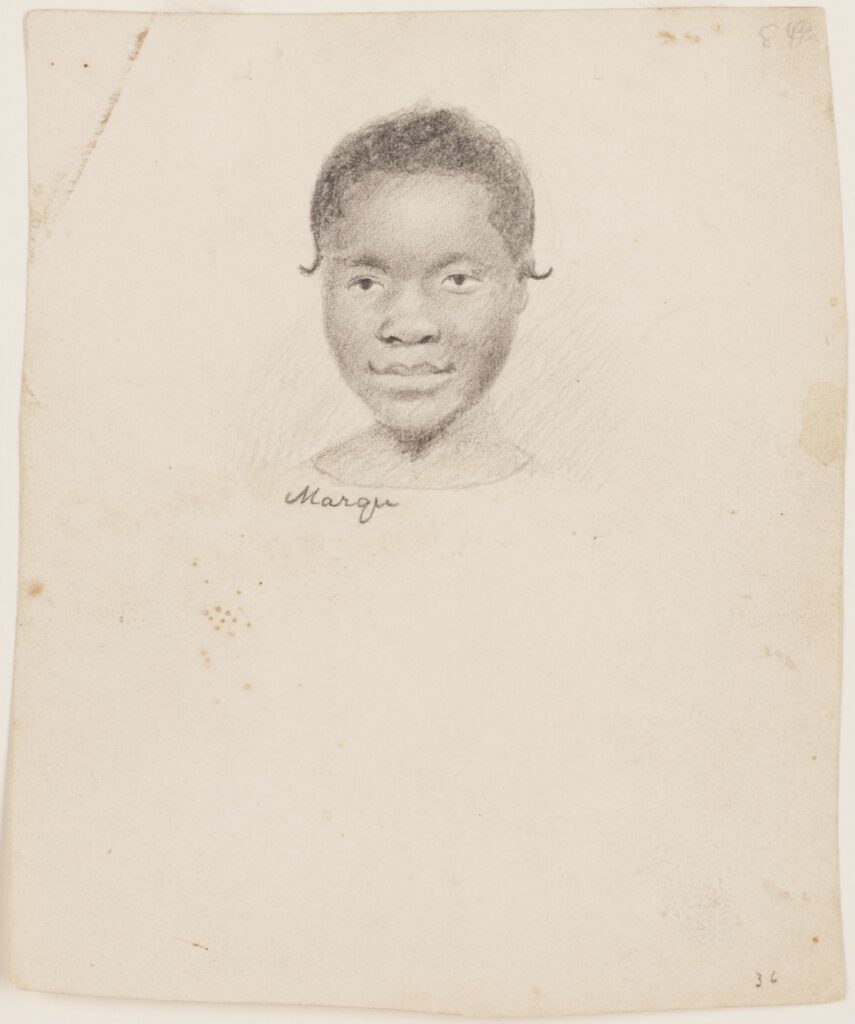
“All We Want is Make Free”
In 1841, a treaty meant the difference between freedom and slavery for a group of Africans who had been kidnapped from their homeland.
Two years earlier, the enslaved Africans revolted against their Spanish captors on board La Amistadoff the coast of Cuba, killing the ship’s captain and cook and taking two slaveholders hostage. The Africans demanded to be returned to their home in Sierra Leone, but the Spaniards deceived them, setting course for the north. The U.S. Navy intercepted the ship, and the Africans were jailed on charges of piracy and murder and put on trial.

The La Amistad case pitted the Spanish government against American abolitionists. Spain demanded the slaves, considered property, be returned to their owners according to a 1795 treaty signed between the United States and Spain. Abolitionists demanded they be freed.
Former President and Secretary of State John Quincy Adams represented La Amistad captives before the U.S. Supreme Court. He argued that they had been illegally enslaved, since Spain had signed a treaty with Great Britain banning the exportation of slaves after 1820. While the Spaniards insisted that the captives were born in Cuba, the defense lawyers pointed out that none of them spoke Spanish and the ages of the children proved they had been born in Africa after 1820.
In a landmark decision for democracy and human rights, the Supreme Court ruled in favor of the Africans, declaring they were free and had never been slaves. The U.S. government released them and they returned to Sierra Leone.
In the Supreme Court’s official opinion, Justice Joseph Story said,
They are natives of Africa, and were kidnapped there, and were unlawfully transported to Cuba, in violation of the laws and treaties of Spain, and the most solemn edicts and declarations of that government.
Spain continued to demand reparations from the United States until 1860.


Collection of the Diplomatic Reception Rooms, U.S. Department of State; Gift of Mr. and Mrs. James Garrison Stradling
Profile of Mar’gru: Captive, Witness, First International Exchange Student

Mar’gru was under the age of 12 when she was captured. Mar’gru, like the other captives, was a native-born African, and had been pawned by her father to pay a debt. Mar’gru later recalled the grueling 100-mile walk to the coastal slave prison, the horrors of the Atlantic Middle Passage, and sale in Cuba. She witnessed the rebellion, and was held with the other children at the house of the jailer during the trial. Mar’gru and the other children appeared in court crying profusely and too distraught to testify, gaining sympathy from onlookers. When the case was won, Mar’gru studied English while abolitionists raised private funds to transport the Africans back to Sierra Leone. She returned in 1842. However, she was later accepted in Oberlin College in Ohio as the first female international exchange student. After completing her intensive coursework, she returned home where she began teaching at a missionary school.